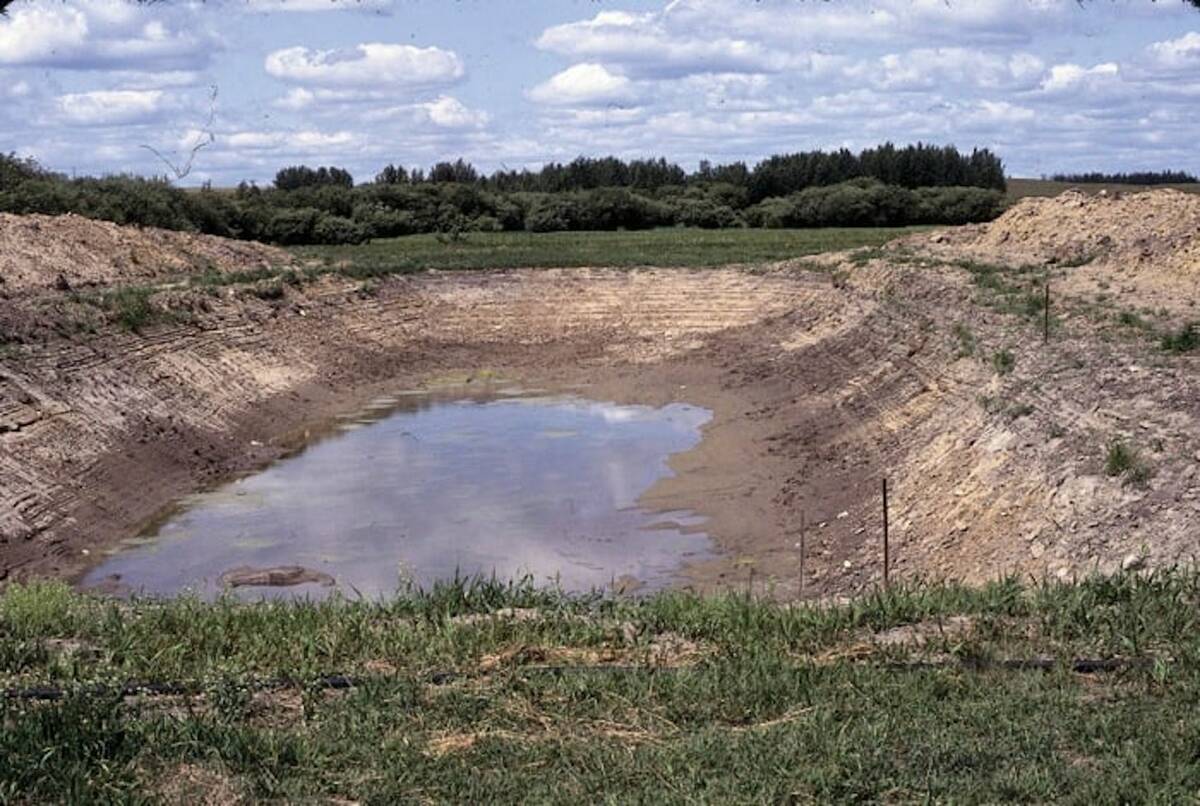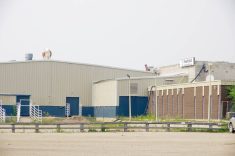LACOMBE, Alta. — There are as many ideas about calving time as there are cattle producers.
“I wouldn’t recommend calving in the winter. I’d rather see people calving in April, May, June,” says John Basarab of Alberta Agriculture.
His reason?
A beef cow’s highest energy requirements occur about six weeks after calving at peak lactation. By summer, cows and calves are generally on lush growing pasture giving the mother ample, fresh feed that encourages birthing recovery and rebreeding. Calves born on grass also appear healthier.
Read Also

Dry summer conditions can lead to poor water quality for livestock
Drought conditions in the Prairies has led to an decrease in water quality, and producers are being advised to closely monitor water quality for their animals.
It makes sense to match the cow’s high energy requirements to when the grass is at peak performance, he told a group at the western forage beef centre’s annual pasture school held in Lacombe.
In Alberta during the last 10 years, the average calving period has backed up from April 15 to March 15.
“We do this because we want big weaning weights and we want those calves to be huge when they get to market.”
Basarab also advised against changing an entire routine.
“We have to be careful with some of these systems.”
One study shows late calving in May to June compared to early calving in early April results in somewhat bigger calves from the late group. This is likely because of favourable nutrition from new growth pasture.
The early calves appeared to have higher weaning weights because they were able to consume more milk and forage.
A University of Nebraska study found it beneficial to match the nutrient requirement of the cow to when range forages have the highest level of crude protein. This saves enough on feeding costs to offset lower weaning weights among late-born calves.
Late calving seems to affect the postpartum interval. This is the period from calving until the cow starts to cycle again.
Ideally, it should be a short period so a calf is born every year. Gestation is 282 days, so the cow needs to cycle within 60 to 80 days to deliver a calf the next year. Many people push their cows with vitamins, more feed and better shelter to make sure they do cycle within a reasonable time. Cows in good condition conceive sooner, which helps maintain the yearly calving interval.
Fall calving is another concept with a number of advantages.
Calves have a lower birth weight with fewer calving difficulties because the cows were in good body condition from summer grazing.
There are fewer death losses from scours and pneumonia. Weaning weights are lower but winter feed costs are higher.
“The total feed requirements of the two systems are almost identical,” said Basarab.
The difference appears in higher winter feed costs because the cow is lactating.
Some also prefer this system because they hope to take advantage of higher calf prices in the spring. But, in the last several years, the best bids for 500 to 600 pounds calves is in September.
Another group that requires special attention is second calf heifers. They are often neglected nutritionally and this affects their capacity to rebreed. Meeting their needs goes beyond good pasture.
Their reproductive tracts are healing, they are still growing and they are replacing molars. If they are mixed in with more mature cows, they may struggle and weaken as they compete for feed and minerals.
“She’s dealing with big cows and she’s the subordinate. She doesn’t get access to the feed because she gets knocked out of the way,” said Basarab.
First calf heifers are usually babied more so they do well their first time around.

















